Between 1974 and 1978, serial killer Ted Bundy murdered 30 victims across seven states — but some say we'll never truly know how many people he killed.
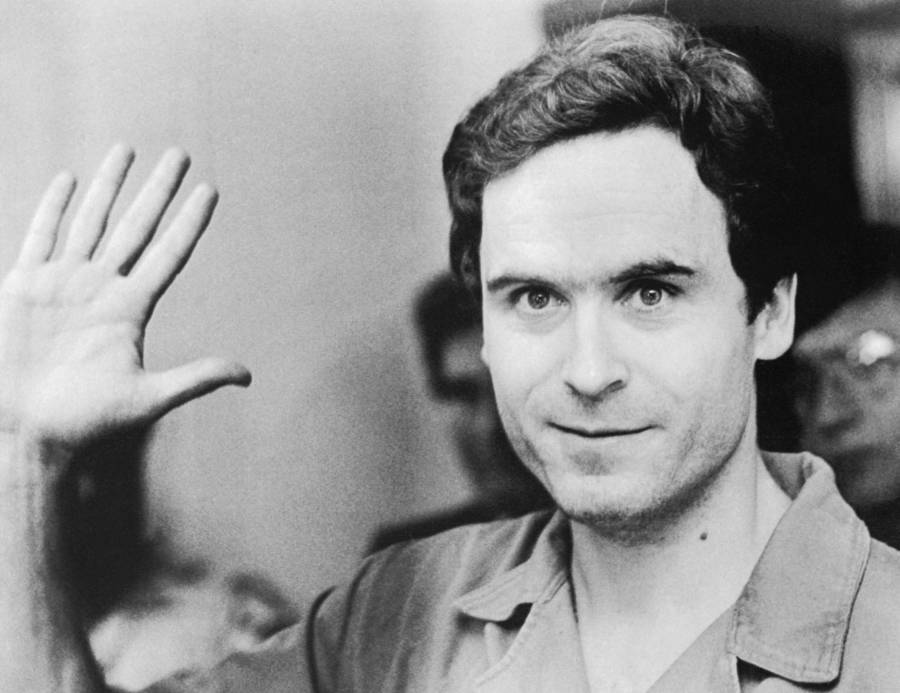
Bettmann/Contributor/Getty ImagesOnce he eventually went to trial, the haunting stories of serial killer Ted Bundy’s victims and the truth about how many people he killed while terrorizing America between 1974 and 1978 finally came out.
Much of the world knows the name Ted Bundy, the infamous serial killer who murdered dozens of young women across American in the 1970s.
But while his story is well-known, the same is not the case for Ted Bundy’s victims. How many people did Ted Bundy kill? Who were they? And how did it happen?
The answers — even 30 years after Bundy’s execution — remain murky. He confessed to 30 murders, but his true body count is thought to be much higher — possibly 100 or more.
With recent advances in DNA profiling, it’s even possible that some cold cases can still be solved. But for now, when it comes to knowing how many people Ted Bundy killed, we only have his word.
Here are the women that we know Ted Bundy preyed upon, and the tragic stories behind their deaths.
Ted Bundy’s Victims In Washington And Oregon
Ted Bundy’s infamous series of brutal murders are believed to have begun in Seattle, Washington in 1974. Not long after earning his bachelor’s from the University of Washington in 1972, he committed his first confirmed murders.
And while some believe that a 14-year-old Bundy’s first victim was a girl named Ann Marie Burr who vanished in 1961, the first of Ted Bundy’s victims that’s been confirmed is Karen Sparks.
January 1974: Karen Sparks
The first of Ted Bundy’s victims is widely believed to be 18-year-old Karen Sparks. Also known as Joni Lenz in Bundy literature, the UW student was attacked in her sleep on January 4, 1974.
After sneaking into her basement bedroom, Bundy beat Sparks with a metal rod torn from the bed frame and then forced it into her vagina.
She was one of the lucky ones: She survived, but spent 10 days in a coma and suffered permanent brain damage from the attack. She woke up with no memory of her brutal beating.
February 1974: Lynda Ann Healey

FacebookLynda Ann Healy in 1969.
Bundy’s next victim was 21-year-old Lynda Ann Healey. Healey was a popular student at UW and gave weather and ski reports at a local radio station. Her colleagues found her disappearance extremely suspicious.
Police found blood on Healey’s bedsheets and pillow, but not enough to indicate that she had bled to death, and no indication as to where she could have gone. Her nightgown hung in the closet with a ring of dried blood around the neck, but some of her clothes, her pillowcase, and her backpack were missing.
It seemed that whoever had bludgeoned her had crept into her room — also in the basement, and accessible via the extra key that she and her roommates kept in their mailbox – knocked her unconscious, removed her pajamas and dressed her in fresh clothes.
Three days after her abduction, according to The Stranger Beside Me by Ann Rule, a male voice called 911: “Listen. And listen carefully. The person who attacked that girl on the eighth of last month and the person who took Lynda Healey away are one and the same. He was outside both houses. He was seen.” Police never got the caller’s name.
Healey’s disappearance was the first sign for police that something sinister was occurring, but it would take them a long time to suspect Bundy. Fourteen months after her disappearance, her skull and jaw bones were found on Taylor Mountain, about an hour’s drive from her home.
March 1974: Donna Gail Manson
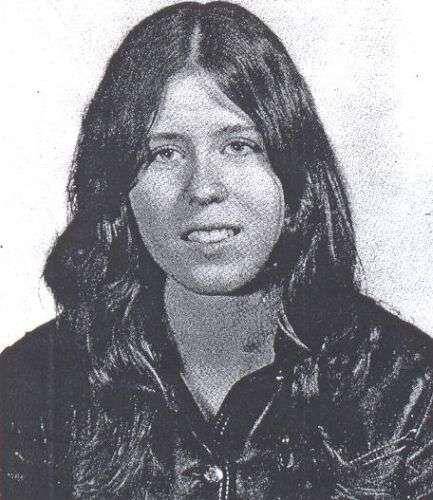
FacebookTed Bundy incinerated Donna Manson’s skull in his girlfriend’s fireplace.
Donna Gail Manson, a 19-year-old student at Evergreen State College south of Seattle, disappeared on her way to a campus concert. Her body was never found, but Bundy later claimed he burned her skull in the fireplace of his girlfriend, Elizabeth Kloepfer.
“Of all the things I did to Liz,” Bundy later confessed to Detective Robert Keppel, “this is probably the one she is least likely to forgive me for. Poor Liz.”
April 1974: Susan Elaine Rancourt
Like all of Ted Bundy’s early victims, the 18-year-old Susan Elaine Rancourt disappeared on a college campus — this time at Central Washington State College, east of Seattle.
Like many of his other victims, Rancourt was studious (a biology major with a 4.0 grade point average), and driven (she worked two full-time jobs one summer to pay for her tuition). Unlike many of his other victims, she was blonde-haired and blue-eyed (Bundy’s previous victims were brunettes).
At 8 p.m. on April 17, Rancourt put a load of laundry in the washing machine and headed to her regular dorm advisors meeting. She planned to see a German film with a friend afterwards, but no one saw her after the meeting. Her clothes remained in the washing machine until a frustrated student took them out and put them in a heap on the table.
Her disappearance prompted a massive search with no results.
Only later, evidence mounted that Rancourt was one of Ted Bundy’s victims, did other students recall an eerie detail from the night Rancourt disappeared: They had been approached by a man named Ted who had his arm in a sling.
May 1974: Roberta Kathleen Parks

FacebookRoberta “Kathy” Parks in 1974, shortly before her murder.
Roberta Kathleen Parks was the first known Ted Bundy victim in Oregon. The student disappeared somewhere between her dorm room at Oregon State University and a coffee shop where her friends were waiting to meet her.
Investigators later discovered her skull, among many others, at Taylor Mountain in Washington.
June 1974: Brenda Carol Ball And Georgann Hawkins
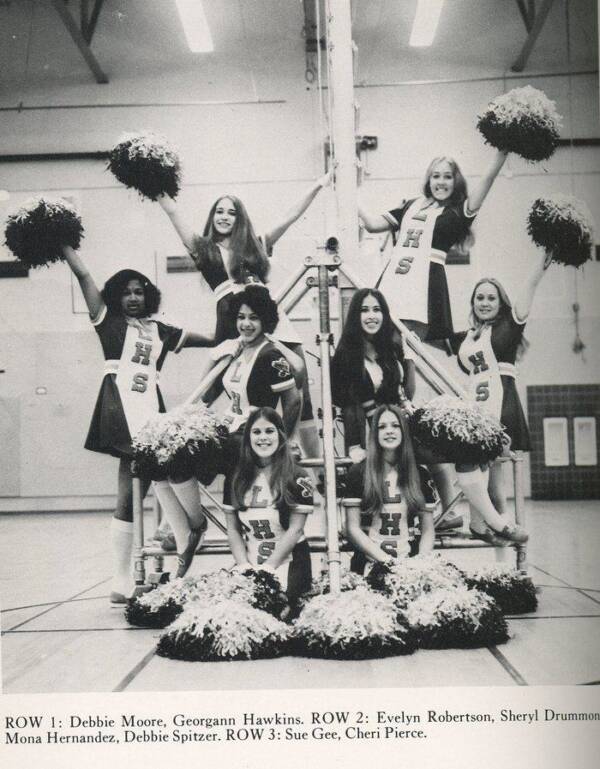
FacebookGeorgann Hawkins (bottom row on the right) was a cheerleader at Lakes High School in Lakewood, Washington.
In June 1974, Bundy struck twice: on June 1 and again on June 11. Details gathered by the police showed a striking similarity: a man displaying some kind of handicap asking for help.
Witnesses last saw 22-year-old Brenda Ball at 2 a.m. outside the Flame Tavern south of Seattle, talking to a man in a sling. Others remembered a man on crutches struggling with a briefcase near the University of Washington the night sorority girl Georgann Hawkins vanished.
It took time for Seattle police to make the connection between this handicapped stranger and accounts from women in Ellensburg, where Susan Rancourt disappeared two months earlier. There, witnesses remembered being approached by a man struggling with a stack of books.
July 1974: Janice Ann Ott And Denise Marie Naslund

FacebookTed Bundy abducted both Janice Ott (left) and Denise Naslund from Lake Sammamish State Park on July 14, 1974.
The list of Ted Bundy’s victims grew again in July 1974 with the murders of Janice Ott and Denise Naslund. Bundy kidnapped both women on the same day from Lake Sammamish State Park in Issaquah, about a 20-minute drive east of Seattle.
The brazen abductions happened in broad daylight. Later, witnesses reported that a man with his left arm in a sling had approached them, introduced himself as Ted, and asked for help rigging his sailboat to his car. One young woman initially obliged, but grew hesitant when she approached his brown Volkswagen Beetle with no sailboat in sight.
“Oh. I forgot to tell you. It’s at my folks’ house — just a jump up the hill,” he said in a slight British accent. When he motioned to the passenger door, she bolted. A little while later, she saw another woman walking beside the man toward the parking lot, deep in conversation.
With this, the police finally had something tangible: The woman described the man as having sandy blond hair, 5’10”, 160 pounds. And he had a brown VW Bug. They commissioned a sketch of the suspect.
The police had no idea just how close they were to Ted Bundy: He worked on Seattle’s suicide hotline and the Seattle Police Department even nominated him to be the director of the Seattle Crime Prevention Advisory Committee.
His colleague, Ann Rule, even reported her suspicions about Bundy to the police after seeing the sketch.
Although the authorities noted that Ted Bundy did, in fact, drive a bronze Volkswagen Bug, no one followed up.
Ted Bundy’s Victims In Utah, Colorado, And Idaho
After Ott and Naslund vanished from Lake Sammamish, the disappearances of young women in the Pacific Northwest abruptly stopped.
Having been accepted into the University of Utah as a law student, Bundy arrived in Salt Lake City in August 1974. It did not take long for him to pick up old habits.
October 1974: Nancy Wilcox
Bundy’s attacks continued in October 1974. First, on October 2, 16-year-old cheerleader Nancy Wilcox went out to buy a pack of gum and vanished. Witnesses later thought they’d seen her riding in a Volkswagen Bug.
Rhonda Stapley: The Survivor Who Kept Her Silence
Then, on October 11, Bundy approached Rhonda Stapley. Stapley was a first-year pharmacy student waiting for a bus to take her back to the University of Utah when Bundy offered to give her a ride in his trademark Volkswagen.
Bundy took her to Big Cottonwood Canyon where he repeatedly strangled and raped her. The only reason she got away is that Bundy turned his back on her, giving Stapley a chance to run for her life and escape by jumping into a nearby river.
But instead of contacting the authorities, Stapley hid her story for nearly 40 years in fears of being blamed and ridiculed. She didn’t tell anyone until 2011.
As she later recalled in an interview, “I was afraid that people would treat me differently if they knew what happened. I wanted to put it behind me and get on with my life, pretend it never happened.”
Melissa Ann Smith And Laura Ann Aime
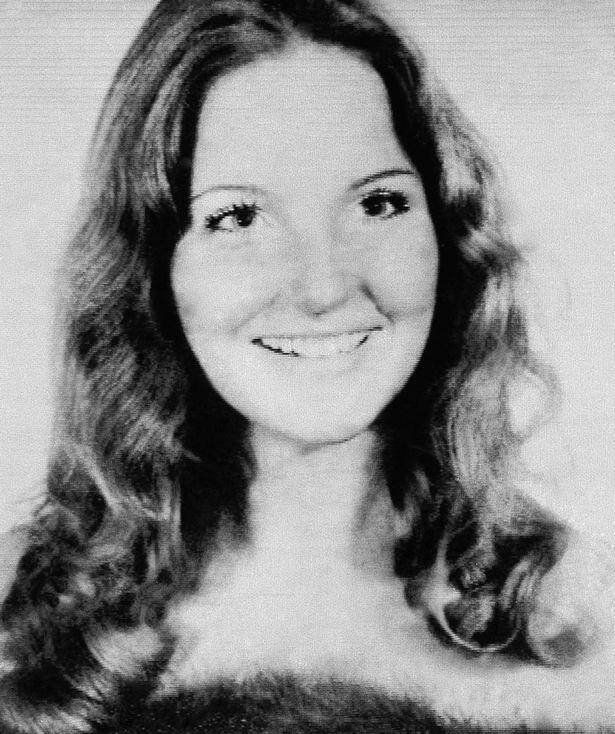
FacebookMelissa Smith’s father was the local police chief. She was killed by Bundy, who likely posed as a police officer when he abducted her.
One week later, Melissa Ann Smith, 17, vanished. The daughter of a police chief, Smith disappeared after meeting a friend at a pizza parlor. She planned to walk home, pick up some clothes, and then head to a friend’s house for a slumber party. But she never made it home. Her body was found nine days later in Summit Park, in the mountains east of Salt Lake City.
On Halloween, Bundy struck again. Seventeen-year-old Laura Ann Aime disappeared on the night of October 31 after leaving a cafe. Her family didn’t realize she was missing for another few days. Hikers found her frozen body in the mountains about a month later.
November 1974: Carol DaRonch And Debi Kent
November 8, 1974 would prove to be crucial for the eventual capture and conviction of Bundy.
First, posing as a police officer named “Roseland,” Bundy approached Carol DaRonch at the Fashion Place Mall in Murray, Utah. He told the 18-year-old girl her car was broken into and she needed to go to the police station.
Trusting his story, DaRonch willingly got into his car. But she quickly noticed something was wrong — they didn’t drive toward the police station, and Bundy’s friendly demeanor quickly shifted to a cold absence. When she asked him what he was doing, he didn’t answer.
Although he managed to force her wrist into a pair of handcuffs and threatened her with a gun, DaRonch broke out of the car and ran for her life. She found refuge with a couple driving nearby, who brought the distraught DaRonch to a police station. She couldn’t find “Roseland’s” face in any of their books of mugshots.
A few hours later, Bundy approached 17-year-old Debi Kent after a performance of a high school play in Bountiful, Utah. This time, he succeeded in abducting the young woman.
Kent’s parents refused to turn off their home’s porch light ever since the disappearance. “We always left the porch light on when they went out at night and the last one home always turned it off,” Kent’s mother said in a 2000 interview. “I will never turn it off. As long as I’m here, I will never turn it off.”
But despite kidnapping and killing Kent, Bundy left behind a clue in the parking lot — a key that matched the handcuffs that DaRonch escaped with earlier that day.
Although the police were unable to connect Bundy to Kent and other similar kidnappings, DaRonch would play a central role in Bundy’s 1976 conviction when her testimony identified him as the man who kidnapped and assaulted her. He was sentenced to prison in Utah for a minimum of one and a maximum of 15 years.
January 1975: Caryn Eileen Campbell
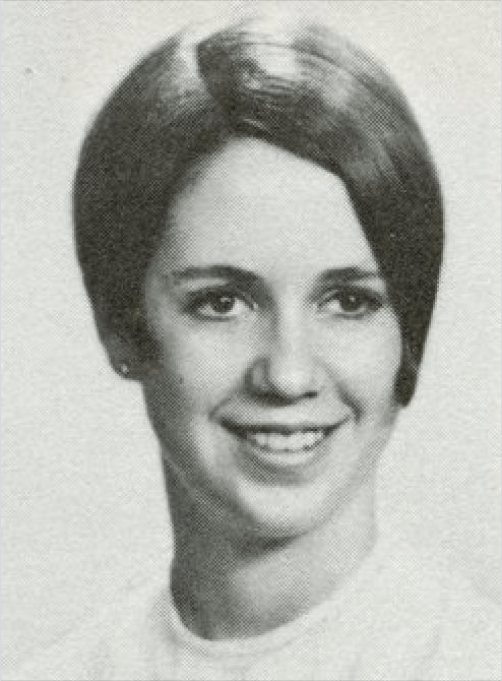
FacebookTed Bundy killed Caryn Campbell while she was enjoying a weekend getaway with her fiancé in Aspen, Colorado.
Bundy wasn’t arrested for the DaRonch kidnapping until October 1975, giving him ample time to continue killing. After a pause in his activities — perhaps DaRonch’s escape rattled him — the serial killer resumed his spree in January 1975.
This time operating in Colorado, Bundy kidnapped 23-year-old Caryn Campbell in a hotel in Aspen. The registered nurse was in town to ski and attend a medical convention, and on the night of January 12 she left her fiancé and his children in the hotel lobby to grab a magazine from their room. She vanished without a trace.
March 1975: Julie Cunningham
Julie Cunningham, a 26-year-old Colorado ski instructor, went to meet her roommate at a local bar. Bundy approached her and pretended to ask for help with his crutches before kidnapping her.
April 1975: Denise Lynn Oliverson
After a fight with her husband in Grand Junction, Colorado, 24-year-old Denise Oliverson jumped on her bike and headed for her parents’ house. She never made it — investigators later found her bicycle under a viaduct.
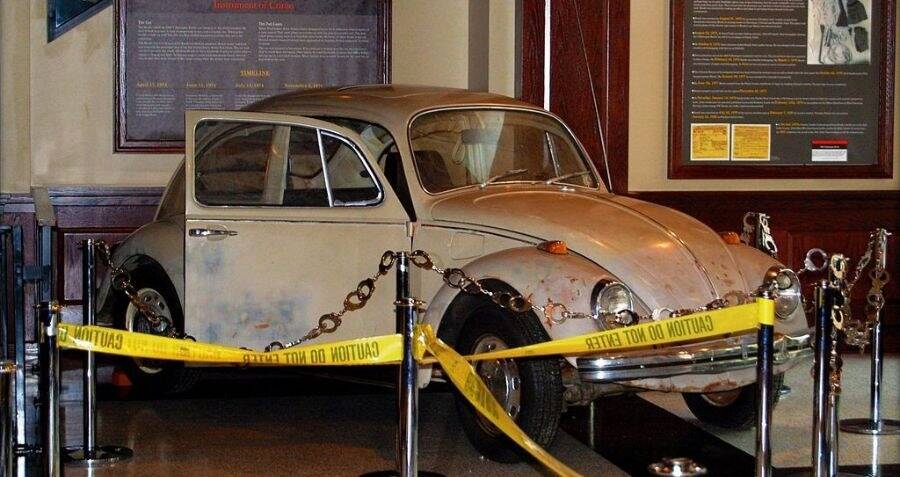
Wikimedia CommonsThe Volkswagen Ted Bundy used to abduct his victims.
May 1975: Lynette Culver
One of Bundy’s youngest victims, Culver was just 12 years old when Bundy abducted her in Pocatello, Idaho on May 6. He had spotted her earlier that day on the playing field of Alameda Junior High. He raped her, murdered her in a hotel bathtub, and threw her into a river. Her body has never been found.
June 1975: Susan Curtis
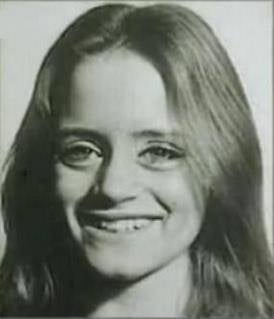
FacebookFifteen-year-old Susan Curtis was killed by Bundy while attending a Mormon youth conference.
Like many of Bundy’s victims, Curtis disappeared from a college campus. Only 15, Bundy abducted her as she left a Mormon youth conference at Brigham Young University. She lived in the same neighborhood and attended the same school as Debi Kent.
In his glut of violent murders, Bundy almost forgot about Susan. In fact, she was the last person that Bundy confessed to killing when he abruptly asked for a tape recorder on the way to his execution. Her body has not been found to this day.
Ted Bundy’s Victims In Florida
In August of 1975, law enforcement finally caught up to Bundy: Police discovered masks, handcuffs, and blunt weapons in Bundy’s car during a routine traffic stop.
Suspicious but lacking evidence, they placed him under surveillance. They tracked down Bundy’s Volkswagen, which he had sold to a teenage boy, and found physical evidence tying him to several of the missing women. Then, his escaped victim Carol DaRonch identified him from a lineup on October 2.
The events that followed are almost too ridiculous to be true: Bundy was convicted for the DaRonch kidnapping and sentenced in June 1976, escaped a year later by jumping out of a second-story courthouse window, was recaptured six days later, and then escaped from prison by cutting through a hole in the ceiling on December 30, 1977.
Bundy proceeded to hop around from Colorado to Chicago to Michigan, to Atlanta, and ultimately to Florida, where his gruesome crimes would continue.
January 1978: Margaret Elizabeth Bowman And Lisa Levy
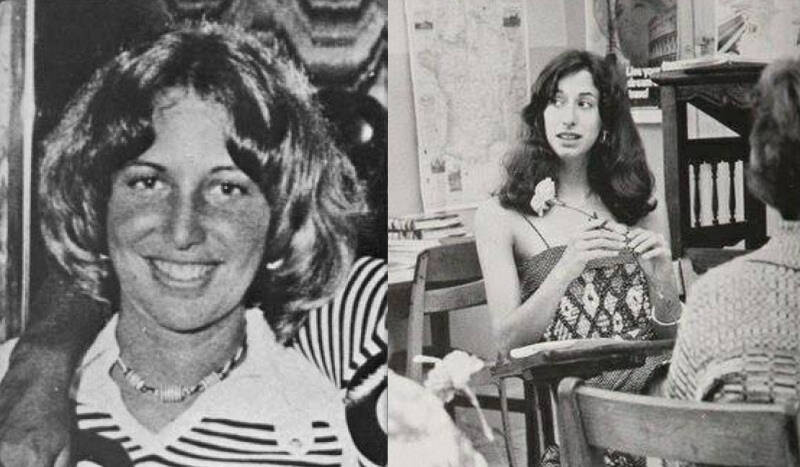
FacebookLisa Levy (left) and Margaret Bowman were brutally murdered by Ted Bundy while sleeping in their Florida State University sorority house.
Once in Florida, Bundy committed his most violent crime yet. Filled with an undeniable urge to kill, he broke into a Florida State University sorority house where several young students slept in the wee hours of January 15. In less than 15 minutes, Bundy turned the sorority house into a living hell.
He snuck into the bedroom of 21-year-old Margaret Bowman and bludgeoned her to death with a piece of firewood. He then proceeded to the room of Lisa Levy, 20. He beat her, strangled her, tore off one of her nipples, bit deeply into her left buttock, and raped her with a bottle of hairspray.
Karen Chandler And Kathy Kleiner
Unsatisfied, Bundy went to attack Bowman’s and Levy’s housemates, Karen Chandler and Kathy Kleiner.
Kleiner would later recall seeing “a black mass. I couldn’t even see that it was a person. I saw the club, saw him lift it over his head, and slam it on me… That’s what I remember most: him lifting the club and bringing it down on me.”
Bundy may have added Chandler and Kleiner to his list of victims if not for the headlights that flashed through the windows of the sorority house. Their sorority sister, Nita Neary, had just arrived home. Neary would go on to provide eyewitness testimony against Bundy.
Although the sorority girls escaped with their lives, both Chandler and Kleiner suffered permanent injuries. Stunned at the intensity of the attack, paramedics even mistakenly told Kleiner that someone had shot her in the face.
Despite the life-scarring encounter, Kleiner went on to marry, start a family, and refused to let herself be defined as the girl who survived a serial killer. If anything, Kleiner says the experience “made me stronger, and it gave me more to live for, and it taught me nobody’s going to put me down.”
Cheryl Thomas
But Ted Bundy still wasn’t done with his Florida rampage. After failing to kill his victims, he proceeded to break into the nearby apartment of 21-year-old FSU student Cheryl Thomas. Although Thomas escaped with her life because her neighbor heard the noise, she suffered permanent deafness and an end to her dance career.
February 1978: Kimberly Leach, Bundy’s Last Victim
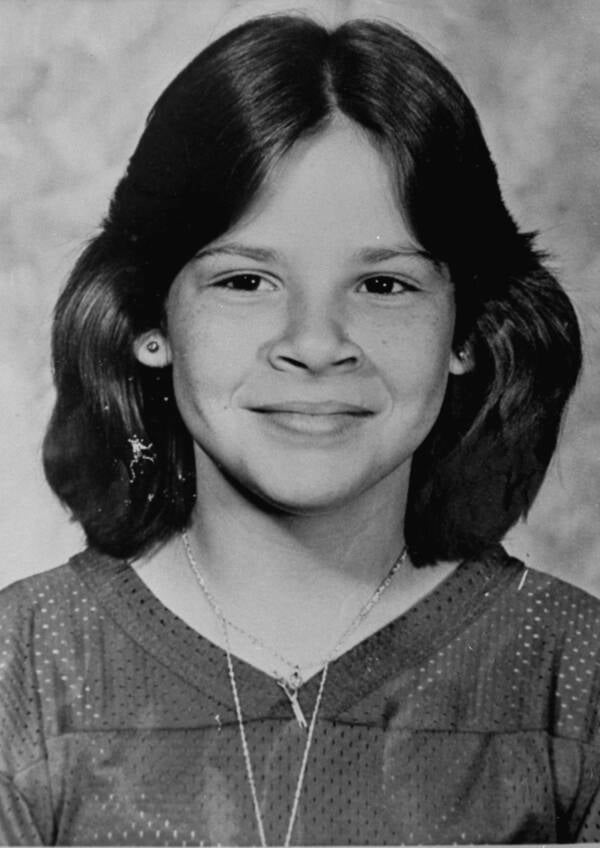
Acey Harper/The LIFE Images Collection/Getty ImagesPortrait of 12-year-old Kimberly Leach, who was a victim of serial killer Ted Bundy.
With the police on his tail, Ted Bundy killed one last time, murdering 12-year-old Kimberly Leach. Bundy kidnapped Leach around her school in Lake City, Florida on February 9, 1978. The poor girl was going to meet a friend and head to class together. Two months later, her body was found 35 miles away in Suwannee River State Park.
How Many People Did Ted Bundy Kill? The True Number Of Victims Emerges At Trial
Despite the appalling violence of his murderous spree in Florida, Bundy was captured by sheer chance.
A police officer named David Lee noticed Bundy driving erratically on February 15 and pulled him over, discovering that his Volkswagen Beetle was stolen. More importantly, he also found Bundy in the possession of the IDs of several women.
This was the end for Ted Bundy. His arrest led to his conviction. Sentenced to death three times, the next several years saw a slow trickle of confessions that confirmed what police had long expected, along with some surprises. In 1989, Ted Bundy was executed by electric chair.
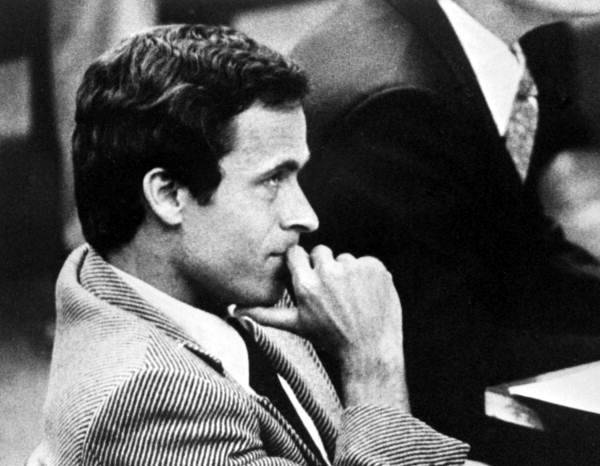
Wikimedia CommonsTed Bundy admitted to killing 30 women, but he was only convicted of killing three.
While the serial killer confessed to murdering 30 women, we may never know just how people Ted Bundy killed. Some even suspect he began murdering women and girls as a teenager.
Ted Bundy’s victims that we do know of were young women in the prime of their life. Considering his heinous crimes, the judge presiding over Bundy’s case summed up the killer aptly: extremely wicked, shockingly evil, and vile.
After reading about Ted Bundy’s victims and how many people Ted Bundy killed, learn about Bundy’s wife Carole Ann Boone. Then, read the story of Bundy’s daughter Rose.






